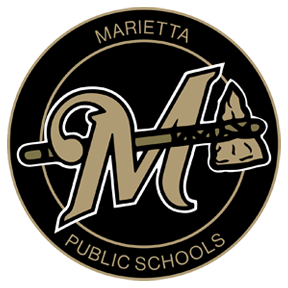In just a few weeks, students at Marietta will return to the classroom where they’ll be met with some changes.
Across the district, a new science curriculum has been adopted. Several teachers either have been or will be attending training sessions for that curriculum, giving them the information they need to fully implement all the program’s resources.
“Recently, there’s been a push to incorporate more STEM lessons into our curriculum,” said Dana McMillin, Elementary Principal. “At the elementary level, it will include biweekly, hands on science experiments, as students learn best with experiencing firsthand. Another feature of our adoption is an all-digital textbook, which means no heavy textbook to pass out to students. The textbook will be on the students’ Chromebook and they can do their work offline without needing internet.”
In the elementary school, the reading program will also change.
“It seems like education is a cycle,” said McMillin. “Several years ago we started grouping students based on their reading skills. Over time, the trend was showing that lower-performing students weren’t making the gains anticipated. So this year, all reading classes will have various levels of readers in class. Struggling students will still have time for intervention, but grade level standards will continue to be taught.”
In the middle school, in addition to the new science curriculum, Language Arts will be different for students in sixth through eighth grades. Language Arts, which was one class, will now be split into two classes, with students attending one class dedicated to English and writing skills and the other focusing on reading.
“When we began to talk about switching to an eight-period day, we decided to spit our Language Arts classes up instead of trying to teach all the standards in a 45-minute window once a day,” said Middle School Principal Carrie Tucker. “We feel like our students will benefit greatly from the change.”
To facilitate the change, the middle school added a new teacher, whose salary was funded by new federal funding intended to help districts address learning losses due to the COVID-19 pandemic.
The high school’s STEM program will be adding a new course, funded by an Oklahoma Lottery Grant written by STEM teacher Lindsey Ramon.
“Students will study engineering and electrical concepts and use them to design, build, program, and control robotic devices,” explained Ramon.
The robotics class joins Computer Science Principles, which was introduced during the 2020-21 year.
Cognizant of the pandemic’s negative influence on the emotional health of many students, the district has also utilized some COVID funds to hire a new counselor at the primary elementary to address social emotional learning.
